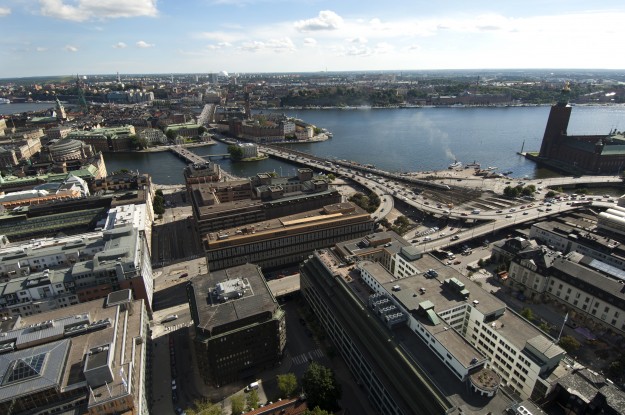
Oh, to live in the future, where all the great ideas we have today actually are being used.
Researchers from KTH’s department of Transport and Location Analysis and Center for Traffic Research have taken a look at what would happen if Stockholm had a fleet of 9,700 self-driving cars — cars that could be shared by people who don’t mind carpooling. And what they found was during rush hours, each of these Shared Autonomous Vehicles (SAV) has the potential to reduce traffic volume by 14 cars.
It’s about making the “smart car” as popular as the smartphone.
Not only that, but cars involved in the rush hour commute would only need 20 percent of the city’s current parking spaces.
There are of course some contingencies. Have a look at the report. The main things are that people would have to be willing to share a ride with a stranger, they would have to wait six minutes for the car to show up, and their trip would take about 13 percent longer than usual.
But it’s a small price to pay for a completely transformed rush hour. One where there are fewer crashes, and nobody arrives at work frazzled and angry. Riders wouldn’t have to bother with traffic but could get some work done on their laptop or just stare out the window and ruminate. You might even find that the shared car is a good place to do some networking.
David Callahan
Centre for Traffic Research at KTH
see also,
Centre for Transport Studies at KTH
